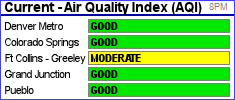


Boards and commission meetings
NEWS

Locals show off their skills at the Family Rodeo
The Garfield County Family Rodeo mutton busts into the fairgrounds on Tuesday, Aug. 5. Swing on by to see the Kidz Rodeo, as these youngsters tough it out through two rounds of mutton bustin’. Once the kids get their fun, the adults take to the outdoor arena for dally ribbon roping, family team branding, barrel racing, rawhide racing, and much, much more!

Good times with the Nitty Gritty Dirt Band
The three-time GRAMMY Award-winning Nitty Gritty Dirt Band brings the All the Good Times: The Farewell Tour to the Garfield County Fair and Rodeo on Friday, August 8. Country music star David Nail gets things warmed up at the Garfield County Fairgrounds. With strong ties to the Western Slope and the Roaring Fork Valley, the band’s Rifle stop on the farewell tour takes its storied career full circle. Come on out to the Garfield County Fairgrounds for an amazing evening of music on Aug. 8.
Tickets are on sale now at garfieldcountyfair.com.
Third-party escrow service available in Colorado
Garfield County opposes mass sale of public lands
Garfield County enacts fireworks prohibition
Garfield County leases Ruedi water to CWCB
Garfield County weighs in on methane rulemaking
Garfield County implements temporary hiring freeze
Garfield County emergency alerts












